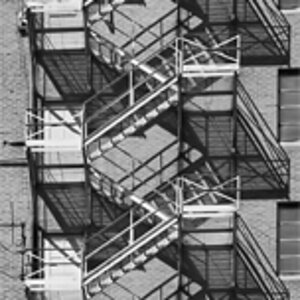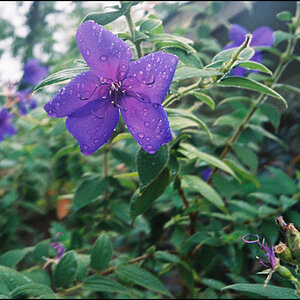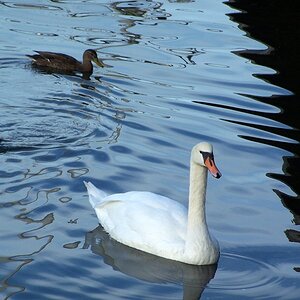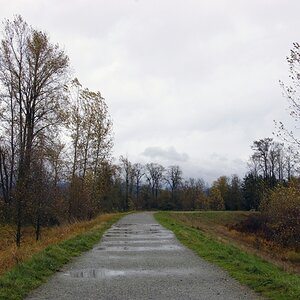Navigation
Install the app
How to install the app on iOS
Follow along with the video below to see how to install our site as a web app on your home screen.

Note: This feature currently requires accessing the site using the built-in Safari browser.
More options
You are using an out of date browser. It may not display this or other websites correctly.
You should upgrade or use an alternative browser.
You should upgrade or use an alternative browser.
Meteor Shower Photography
- Thread starter Des H
- Start date
Goontz
TPF Noob!
- Joined
- Jul 17, 2009
- Messages
- 1,275
- Reaction score
- 2
- Location
- Austin/Houston, TX
- Can others edit my Photos
- Photos OK to edit
Yeah, I ended up getting stuck at work late last night so was pretty tired when I got home, but it was too cloudy here anyways  Bummer.
Bummer.
NickRummy
TPF Noob!
- Joined
- Jul 16, 2009
- Messages
- 46
- Reaction score
- 1
- Location
- Akron Ohio
- Can others edit my Photos
- Photos OK to edit
Goontz
TPF Noob!
- Joined
- Jul 17, 2009
- Messages
- 1,275
- Reaction score
- 2
- Location
- Austin/Houston, TX
- Can others edit my Photos
- Photos OK to edit
Thanks. I'll see if the sky's any clearer tonight.There is still a chance some could be seen tonight. I posted some info about it here yesterday.
chammer
TPF Noob!
- Joined
- Jul 30, 2009
- Messages
- 640
- Reaction score
- 5
- Location
- Virginia Beach, VA
- Can others edit my Photos
- Photos OK to edit
i was hoping, but as my luck would have it...it was completely overcast here and even rained for a few moments. tonight is most likely more of the same. calling for rain starting in afternoon and lasting for the next....10 days. *sigh*
im sure i wouldnt have been able to capture an image, but i sure would like to see something like this with my own eyes at least once.
im sure i wouldnt have been able to capture an image, but i sure would like to see something like this with my own eyes at least once.
- Joined
- Apr 9, 2009
- Messages
- 41,401
- Reaction score
- 5,706
- Location
- Iowa
- Website
- kharrodphotography.blogspot.com
- Can others edit my Photos
- Photos OK to edit
The shower started a couple of weeks ago. Tonight, Earth passes throught the middle of the debris field according to one astronomer.
The big problem is the Moon will be bright enough to make many of the 'shooting stars' invisible.
Meteor showers happen all year long. The Perseids, which is this shower, are considered the best of the year and it's very handy because it's summer time.
The big problem is the Moon will be bright enough to make many of the 'shooting stars' invisible.
Meteor showers happen all year long. The Perseids, which is this shower, are considered the best of the year and it's very handy because it's summer time.
Sn00bies
TPF Noob!
- Joined
- Jul 4, 2009
- Messages
- 89
- Reaction score
- 0
- Location
- Utah
- Can others edit my Photos
- Photos NOT OK to edit
I tried to get some this morning, but it didn't quite work out. I started with my Sigma 10-20 hoping to cover a large area to ensure I got some meteors in the image, but at F4 wide open, the fast streaks of light didn't seem to be bright enough or long enough lasting to register.
I tried to gauge what settings I would need by just taking shots of bright stationary stars for the length of time that the comet would likely be visible (very short, obviously), and adjust my settings until some of the brighter stars began to appear in a single quick shot. At F4 on my Sigma, I had to have a very long (compared to a meteors visibility anyway) exposure before any stationary stars showed up, so a meteor of equal brightness would have to be in the sky for many seconds before the light would register to the sensor. Like that would happen. I could have bumped up my ISO, but then I would run the risk of overexposing and washing out any meteors, or the meteors happening after the image was already washed out. I suppose I could have made an exact science and figured out when the image became too washed out, but the conditions weren't very ideal for this where I was.
So, I decided to scrap the idea of using wide angle, and went to my 50mm 1.8 to increase my chances of the fast streaking light registering. Still though, I didn't get any meteors in any shots. I think the 50mm field of view was too narrow and hindered chances of catching any meteors. Another problem I ran into was cars would drive by the mountain road and I think they helped to wash out my pics, that plus I left the shutter open for a while to hopefully capture a meteor which made it wash out more also. In retrospect, I probably should have just done one shot after another of 20-30sec, but I had my wife with me so if I was working with my camera every 30 sec she would have been rather frustrated.
I think that is one of the key points though, take a lot of shorter exposed images. Finding suitable aperature/iso settings is just a matter of adjusting until you see the stars show up bright in a .5-2sec exposure.
I tried to gauge what settings I would need by just taking shots of bright stationary stars for the length of time that the comet would likely be visible (very short, obviously), and adjust my settings until some of the brighter stars began to appear in a single quick shot. At F4 on my Sigma, I had to have a very long (compared to a meteors visibility anyway) exposure before any stationary stars showed up, so a meteor of equal brightness would have to be in the sky for many seconds before the light would register to the sensor. Like that would happen. I could have bumped up my ISO, but then I would run the risk of overexposing and washing out any meteors, or the meteors happening after the image was already washed out. I suppose I could have made an exact science and figured out when the image became too washed out, but the conditions weren't very ideal for this where I was.
So, I decided to scrap the idea of using wide angle, and went to my 50mm 1.8 to increase my chances of the fast streaking light registering. Still though, I didn't get any meteors in any shots. I think the 50mm field of view was too narrow and hindered chances of catching any meteors. Another problem I ran into was cars would drive by the mountain road and I think they helped to wash out my pics, that plus I left the shutter open for a while to hopefully capture a meteor which made it wash out more also. In retrospect, I probably should have just done one shot after another of 20-30sec, but I had my wife with me so if I was working with my camera every 30 sec she would have been rather frustrated.
I think that is one of the key points though, take a lot of shorter exposed images. Finding suitable aperature/iso settings is just a matter of adjusting until you see the stars show up bright in a .5-2sec exposure.
fokker
No longer a newbie, moving up!
- Joined
- Jun 23, 2009
- Messages
- 2,829
- Reaction score
- 295
- Location
- New Zealand
- Can others edit my Photos
- Photos OK to edit
I tried to get some this morning, but it didn't quite work out. I started with my Sigma 10-20 hoping to cover a large area to ensure I got some meteors in the image, but at F4 wide open, the fast streaks of light didn't seem to be bright enough or long enough lasting to register.
I tried to gauge what settings I would need by just taking shots of bright stationary stars for the length of time that the comet would likely be visible (very short, obviously), and adjust my settings until some of the brighter stars began to appear in a single quick shot. At F4 on my Sigma, I had to have a very long (compared to a meteors visibility anyway) exposure before any stationary stars showed up, so a meteor of equal brightness would have to be in the sky for many seconds before the light would register to the sensor. Like that would happen. I could have bumped up my ISO, but then I would run the risk of overexposing and washing out any meteors, or the meteors happening after the image was already washed out. I suppose I could have made an exact science and figured out when the image became too washed out, but the conditions weren't very ideal for this where I was.
So, I decided to scrap the idea of using wide angle, and went to my 50mm 1.8 to increase my chances of the fast streaking light registering. Still though, I didn't get any meteors in any shots. I think the 50mm field of view was too narrow and hindered chances of catching any meteors. Another problem I ran into was cars would drive by the mountain road and I think they helped to wash out my pics, that plus I left the shutter open for a while to hopefully capture a meteor which made it wash out more also. In retrospect, I probably should have just done one shot after another of 20-30sec, but I had my wife with me so if I was working with my camera every 30 sec she would have been rather frustrated.
I think that is one of the key points though, don't take your wife with you when shooting difficult captures.
Fixed :greenpbl:
Jeffro
TPF Noob!
- Joined
- Jun 30, 2009
- Messages
- 701
- Reaction score
- 0
- Location
- Louisiana
- Website
- infinitecustoms.forumotion.net
- Can others edit my Photos
- Photos NOT OK to edit
I was hoping to see some pics in here!!
ocular
TPF Noob!
- Joined
- Jul 29, 2009
- Messages
- 1,107
- Reaction score
- 1
- Location
- outoftown
- Can others edit my Photos
- Photos NOT OK to edit
I actually saw some, but unfortunately it wasn't safe enough for me to capture them. Some asshole with a flood light on his truck, enough said. At least I saw a couple walking back.
Des H
TPF Noob!
- Joined
- Apr 7, 2009
- Messages
- 22
- Reaction score
- 0
- Location
- Drogheda, Ireland
- Website
- www.deshodginsphotography.com
- Can others edit my Photos
- Photos OK to edit
I got nothing last night because of cloud and rain  Maybe tonight fingers crossed
Maybe tonight fingers crossed
 Maybe tonight fingers crossed
Maybe tonight fingers crossedSn00bies
TPF Noob!
- Joined
- Jul 4, 2009
- Messages
- 89
- Reaction score
- 0
- Location
- Utah
- Can others edit my Photos
- Photos NOT OK to edit
I think that is one of the key points though, don't take your wife with you when shooting difficult captures.
Fixed :greenpbl:
Ha... that's easier said than done when I'm leaving the house at 1a.m.

And also...... since I saw this I thought it was appropriate here.

:addpics:
Similar threads
- Replies
- 18
- Views
- 1K
- Replies
- 20
- Views
- 2K


![[No title]](/data/xfmg/thumbnail/37/37634-504722605a418b398f3cd1dbabf936e5.jpg?1619738156)
![[No title]](/data/xfmg/thumbnail/35/35932-28690c4fc247cf491230e47fc70ebeb5.jpg?1619737235)

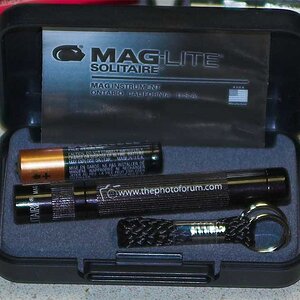
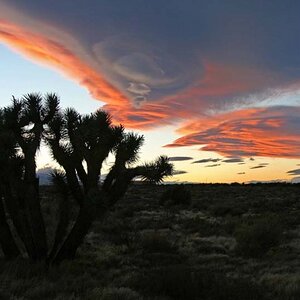
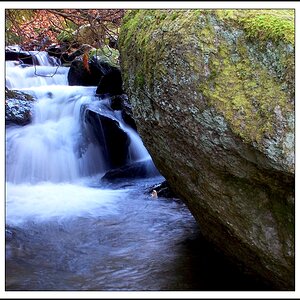
![[No title]](/data/xfmg/thumbnail/35/35931-5e10675f3f7d827bc7ae4689f16bda8a.jpg?1619737234)
